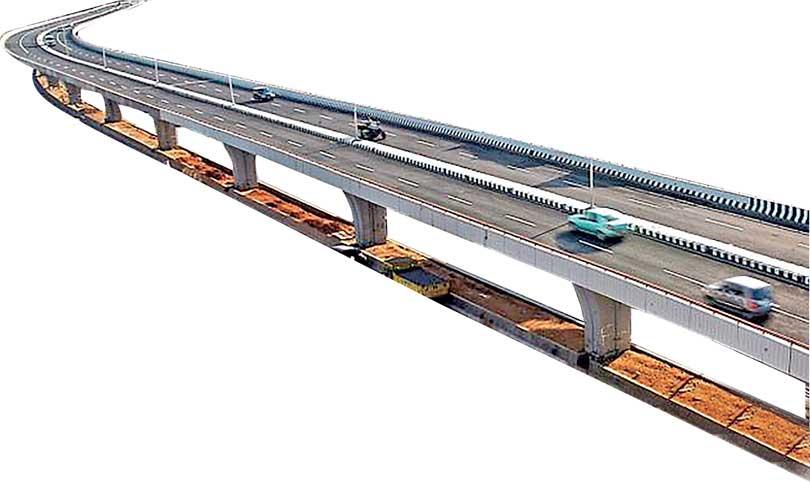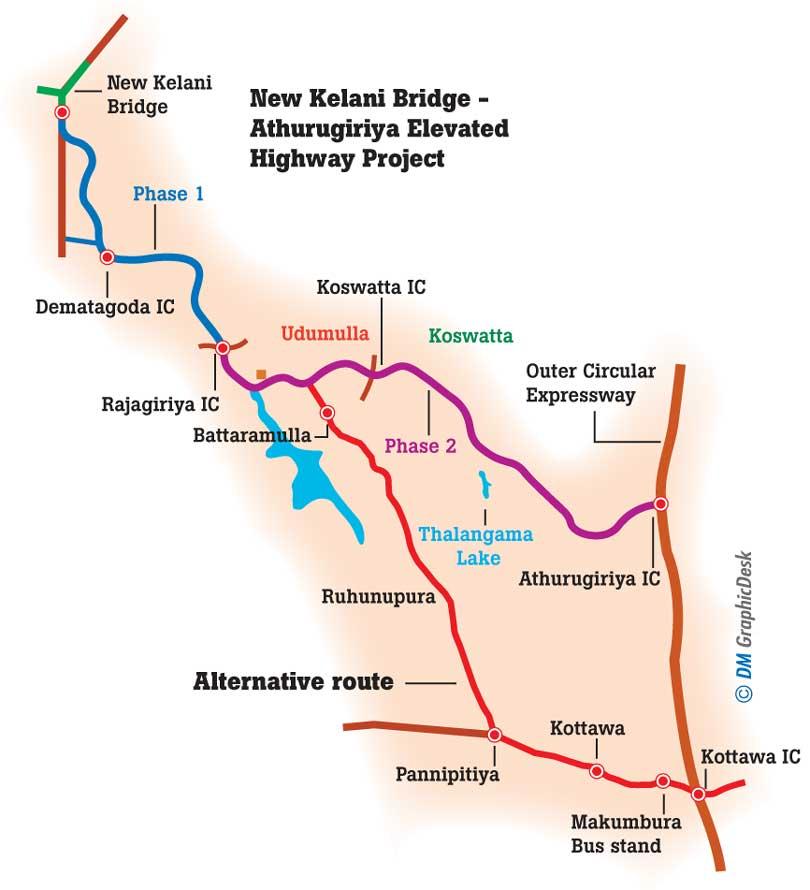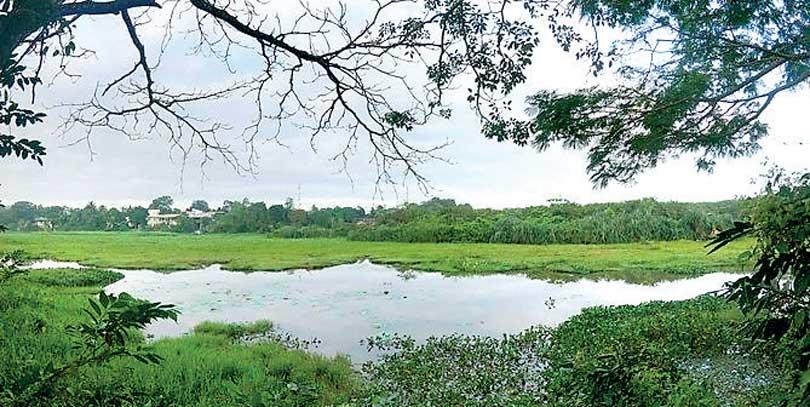Reply To:
Name - Reply Comment

 In December 2020, the Daily Mirror shed light on the Elevated Highway Project connecting the New Kelani Bridge to Athurugiriya proposed to be built over the RAMSAR listed Thalangama Environmental Protection Area (TEPA). The article shed light on the importance of this area as it is one of the last remaining urban green patches in the Colombo District. Even though the project was in its preliminary stages back then a series of new developments have come to light over the past few months. Repeated objections from area residents in Thalangama and Averihena temporarily put the project on hold. However, with a new contractor on the block, residents fear that Colombo will soon lose one of its important wetlands.
In December 2020, the Daily Mirror shed light on the Elevated Highway Project connecting the New Kelani Bridge to Athurugiriya proposed to be built over the RAMSAR listed Thalangama Environmental Protection Area (TEPA). The article shed light on the importance of this area as it is one of the last remaining urban green patches in the Colombo District. Even though the project was in its preliminary stages back then a series of new developments have come to light over the past few months. Repeated objections from area residents in Thalangama and Averihena temporarily put the project on hold. However, with a new contractor on the block, residents fear that Colombo will soon lose one of its important wetlands.
Best bidder wins
In May 2021, the Rs. 135 billion contract for the construction of the four-lane elevated expressway connecting the Athurugiriya Interchange and the New Kelani Bridge was awarded to the China Harbour Engineering Corporation (Ltd.) on a design, build, finance, operate, maintain and transfer basis for a period of 18 years as approved by the Cabinet-appointed negotiating committee. While the duration of the project is three years an additional 15-year period remains to cover the cost and earn a profit. According to Co-Cabinet Spokesperson Udaya Gammanpila, the expressway will be transferred back to the government after 18 years.

Gazette pending at Legal Draftsman’s Dept.
The project is designed to be implemented in two phases – Phase I originating from New Kelani Bridge to Rajagiriya and Phase II from Rajagiriya to Athurugiriya. However, Phase II of the project was temporarily put on hold when residents in Thalangama and Averihena opposed the construction of the highway over a Protected Area.
Subsequently a Writ petition was filed by the Centre for Environmental Justice (CEJ) at the Court of Appeal seeking an order preventing the construction of the highway over the Protected Area. One of the main arguments is that the area in question (the Thalangama Tank and its environs) has been declared as a National Environmental Protection Area and gazetted by the Central Environmental Authority under the National Environmental Act No. 47 of 1980 by Gazette Extraordinary 1487/10, dated March 5, 2007.
However, recently, the Cabinet nod has been given to amend the said gazette and consider the possibilities of constructing the expressway in an environmentally friendly manner. “The Gazette is now at the Legal Draftsman’s Department,” opined CEA Director General Hemantha Jayasinghe.
Constructing a road via a gazetted area is illegal. Even though several studies have been done to underscore the environmental significance of the proposed area and an alternative route too has been proposed, the project is likely to continue along the previously mentioned route via the TEPA. However, Jayasinghe affirmed that an Environmental Impact Assessment will be conducted and thoroughly analysed before the stakeholders arrive at a final conclusion, once the Legal Draftsman’s Department reverts with their observations.
Alternative route
The existing route of the Expressway is from New Kelani Bridge through Kolonnawa, Rajagiriya, Buthgamuwa, Battaramulla, Koswatta, Pothuarawa, Hokandara to the Outer Circular Expressway. In a well researched report prepared and submitted to the Central Environment Authority (CEA) and the Urban Development Authority (UDA) by Professor Emeritus and former Dean of the Department of Zoology at the Colombo University, a well-known Ornithologist and Environmentalist in Sri Lanka, an alternative route for the Elevated Highway may be constructed along the middle of the existing Battaramulla/Pannipitiya/Kottawa Road to connect with Makumbura, given that a Highway already exists to join Athurugiriya to Kottawa. The Elevated Highway could proceed up to Ruhunupura along the middle of the existing roadway and then deviate along the paddy field which is not a reservation, in order to get to Makumbura.
Area residents claim that this proposal is seemingly more straight forward and logical and would prevent the destructions to the Thalangama Wetlands Reservations. This deviation proposed is approximately 12-14 Km long and the entire Elevated Highway could follow the existing four lane road on pillars above the existing roadway, with the pillars being either on the middle of the road or on either sides of the road without destroying the critical and highly sensitive Environmentally Protected Area (EPA) of the Thalangama Wetlands Areas, which will also inconvenience the public who comprise over thousands of residents who live on either sides of the wetlands, as also, the diverse and rare species habiting the wetlands. Environmentalists believe that the Thalangama Wetlands are more important to be protected today than to be destroyed. Therefore, they claim that any attempt to reconsider and re-gazette the existing legislation is a very negative procedure.
Case refixed to July 26
The Daily Mirror learned that even though the case was taken up at the Court of Appeal yesterday (June 28) the case was refixed for support on July 26, 2021.
“The case was delayed due to the pandemic and another concern is that the proposed route for Phase II of the project isn’t clear as to whether it would be built via the TEPA,” opined CEJ Chairman Attorney-at-Law Ravindranath Dabare.
When asked about Cabinet approval being given to amend the Gazette, Dabare said that the Cabinet cannot override existing provisions of the Gazette and that it is illegal.
Discussions underway
The new project contractors have however agreed to propose several options to construct the Expressway in such a way that it wouldn’t disturb the TEPA. “One of the options is to develop the project in this area on a tunnel-basis,” said Road Development Authority Director General L. V. S Weerakoon.
But he said that the matter is still at a discussion stage and the Urban Development Authority and CEA has to finalise it.
Residents write to foreign stakeholders
In a letter addressed to Qi Zhenhong, Ambassador of People’s Republic of China to Sri Lanka, residents have highlighted the damages that would be done to the ecosystem if the proposed Expressway continues as planned.
The letter states that Colombo District has lost over 40% of its sacred wetlands and the damages caused by such destructions have been manifested by massive floods that have made the Kaduwela Highway intersection impassable during the recently concluded rainy period.
“More flooding, biodiversity destruction, air and noise pollution, disturbance to serenity and scenic beauty of the area and to farmers’ livelihoods, effects on air quality affecting the health of thousands of people living around the area and losses in carbon absorption and oxygen production will be the consequences if the four lane elevated highway is to overrun these sensitive ecosystem area of the Thalangama wetlands reservations that have also been listed under the RAMSAR Convention as biodiversity hotspots,” the letter reads.
The residents further request the Ambassador’s office to intervene with CHEC to consider other alternative routes, particularly the possibility of going over the existing main roads from Kaduwela to Koswatta and therefrom to Rajagiriya, “where there will be least damage caused to the people and the environment.”
Green Bonds Proposal
The letter further proposes the issuance of Green Bonds to provide for the extra costs regarding alternative routes.
The issuance of Green Bonds provide opportunities for moving beyond mitigation which an EIA would normally suggest and therefore to move to ‘Zero Impact’ options for infrastructure development projects. Green Bonds present a collection of tools and approaches that allow to commit public and private sector financing for infrastructure development projects where biodiversity conservation, environmental protection and sustainability issues could be integrated to the early stages of design to completely avoid impacts on the environment. China is considered as one of the leading countries in the world in issuing Green Bonds to preserve the environment.
“If a study of the Economic and Environmental lmpact Assessment (EEIA) is to be done, it will showcase that economic costs of environmental damage to the sensitive ecosystems shall far outweigh the extra costs of a different route that will avoid destructions to a unique, sensitive and irreplaceable reservation such as the Thalangama wetlands,” the letter reads.
Copies of the letter, proposal of the alternative route, Writ application, a petition with over 200 signatures opposing the destruction of the sensitive ecosystem in question, the Green Bonds Proposal have also been enclosed and sent to CHEC Managing Director Houlian Jiang and Asia Development Bank Country Director Chen Chen.

Scenic Thalangama Wetland
Doubts galore
Residents anticipate that the following questions/concerns will be raised in Parliament;
Several attempts were made to contact Ministry of Highways Secretary R. Premasiri, Urban Development Authority Director General N. P. K Ranaweera and Environment Minister Mahinda Amaraweera but to no avail. The Daily Mirror has also written to the Chinese Embassy via email requesting an overview of how the project would proceed within the area in question, but was still awaiting a response from the embassy at the time this edition went to press.